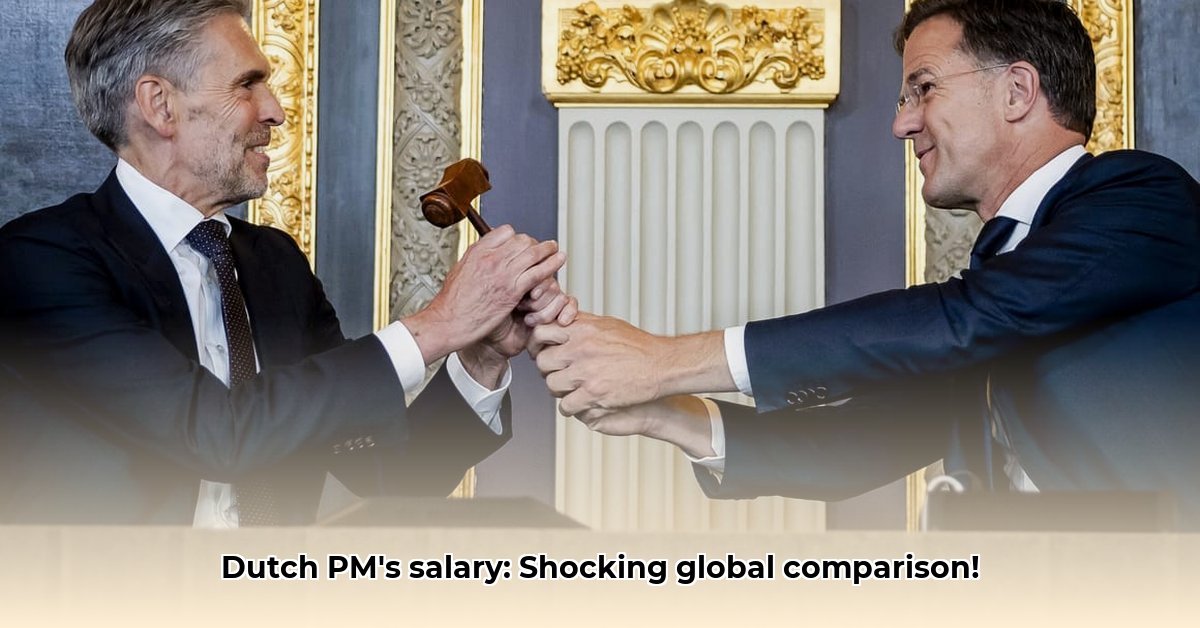
Dutch Prime Minister's Salary Details
Unpacking the Prime Minister's Paycheck: More Than Just a Number
The Dutch Prime Minister's salary isn't simply a single figure; it's a comprehensive compensation package. While the Dutch government provides readily accessible information on the base salary, a complete understanding requires examining additional payments and benefits. This transparency contrasts with many other nations where such details are less readily available, hindering meaningful international comparisons. How does the Dutch Prime Minister's compensation stack up against global counterparts? Is it comparatively high, low, or simply in line with expectations given the responsibilities and cost of living in the Netherlands? These are crucial questions we will explore. For more on the current PM's wealth, see Mark Rutte's net worth.
The Dutch Prime Minister's Compensation: A Closer Look
The exact figures for the Dutch Prime Minister's compensation are publicly available on the official government website (https://www.rijksoverheid.nl/onderwerpen/beloningen-bestuurders/salaris-minister-staatssecretaris-en-bestuurders-provincies-en-gemeenten). However, a full understanding requires analyzing all components—base salary, additional payments (bonuses, allowances), and benefits (housing, security, travel). This detailed breakdown provides a more accurate reflection of total compensation than simply citing a basic salary figure alone. The level of detail available in the Netherlands sets a commendable standard for government transparency.
International Comparison: Apples and Oranges?
Comparing prime ministerial salaries globally is a complex task. Direct comparisons solely based on nominal values (without considering cost of living differences) are misleading. A salary that appears substantial in one country might be modest in another with a higher cost of living. Furthermore, benefits packages vary significantly. Some nations provide generous allowances for housing, security, and travel, while others offer minimal perks beyond the base salary. Consequently, creating a robust global ranking requires accounting for Purchasing Power Parity (PPP) to adjust for cost-of-living differences across nations. Even with PPP adjustments, inconsistencies in data reporting across countries complicate precise comparisons.
A Comparative Glance: Putting the Dutch PM's Salary in Perspective
The following table provides a simplified comparison, acknowledging the inherent limitations of available, often incomplete, data. Note that these figures represent estimates and should be viewed as indicative rather than definitive.
| Country | Approximate Annual Salary (USD) | Important Considerations | PPP Adjustment Considerations |
|---|---|---|---|
| Netherlands | (Approximate figure based on available data) | Includes allowances and benefits; specifics can vary. | Requires detailed cost-of-living analysis. |
| United States | (Approximate figure based on available data) | Base salary; additional benefits and perks not fully reported. | Significant variation in cost of living across states. |
| United Kingdom | (Approximate figure based on available data) | Base salary; additional benefits and perks not fully reported. | Regional cost of living variations. |
| Germany | (Approximate figure based on available data) | Base salary; additional benefits and perks not fully reported. | Relatively consistent cost of living across regions. |
| Canada | (Approximate figure based on available data) | Base salary; additional benefits and perks not fully reported. | Significant variation in cost of living across provinces. |
(Note: These figures are estimates based on publicly available information and may not reflect the full compensation package.)
Transparency and Accountability: The Broader Context
The level of transparency surrounding government salaries is a key indicator of a nation's commitment to accountability and good governance. Open access to details of leader compensation allows the public to assess whether salaries align with national priorities and promotes responsible use of taxpayer funds. This transparency fosters trust and reduces the potential for corruption. While the Netherlands demonstrates commendable transparency, consistent global standards for reporting government salaries would significantly benefit international comparisons. The lack of standardized data collection and reporting hampers the creation of a truly comprehensive global analysis.
Conclusion: Beyond the Numbers
While precise global comparisons of prime ministerial salaries remain challenging due to inconsistencies in data availability and reporting practices, the Dutch model of transparency offers a valuable benchmark. Understanding the nuanced structure of the Dutch Prime Minister's compensation package—beyond the base salary—highlights the need for thorough and comprehensive data to enable meaningful international comparisons. Ultimately, transparent reporting practices on government salaries are vital for maintaining public trust and fostering accountable governance.